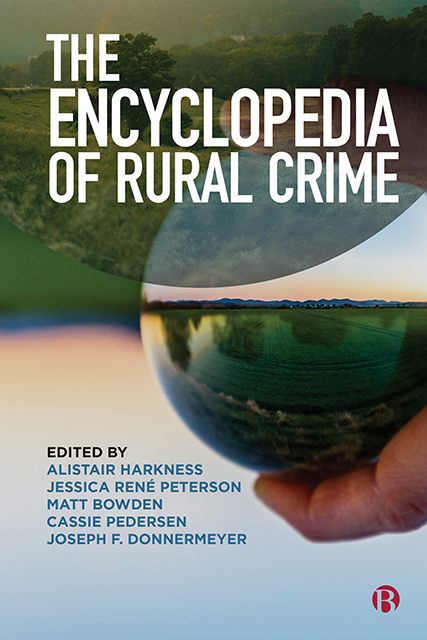Book contents
35 - Drug Cultivation, Manufacture and Movement
Published online by Cambridge University Press: 20 June 2023
Summary
There is a large body of research on drug use and drug treatment. Less studied is the geographical dispersion of drug cultivation, manufacture and movement. These activities are skewed towards rural areas for a variety of reasons. Some activities require considerable space to operate at scale. The cultivation of marijuana, coca and poppies require physical space and is most cost effective when done outdoors. Methamphetamine production also depends on a precursor chemical derived from the ephedra plant, widely grown for thousands of years in the Middle East and China. Remote areas provide a level of physical privacy not possible in cities.
Rural areas also facilitate the dispersion of noxious odours from drug laboratories, as is the case with methamphetamine, cocaine and heroin production. Cultivated marijuana plants can also emit a strong odour. Production away from urban areas reduces the chances that citizens or authorities will detect these operations.
A rural and remote location presents another advantage to those making or trafficking in illicit drugs. Compared with urban areas, many rural areas are under-policed. Rural officers may cover large geographic areas, have fewer resources, frequently work alone and are often without backup nearby. In many countries, rural areas are also the poorest parts of the country, making underpaid and understaffed local officials easy targets for corruption. In some countries rural areas serve as a refuge for militant groups whose activities are funded by the illicit drug trade.
Drug cultivation, manufacture and trafficking hotspots
Reflecting the global extent of the problem, the United States Department of State (2021) has identified 22 countries involved in major illicit drug producing and/ or drug-transit activities, including Afghanistan, The Bahamas, Belize, Bolivia, Burma, Colombia, Costa Rica, Dominican Republic, Ecuador, El Salvador, Guatemala, Haiti, Honduras, India, Jamaica, Laos, Mexico, Nicaragua, Pakistan, Panama, Peru and Venezuela.
Through its annual reports, the United Nations Office on Drugs and Crime (2021) identifies patterns and trends in drug production and drug trafficking. Following their lead, this discussion is organized by drug type.
Opiates
Afghanistan leads the world in opium production, accounting for an estimated 83 per cent of the opium produced worldwide.
- Type
- Chapter
- Information
- The Encyclopedia of Rural Crime , pp. 141 - 144Publisher: Bristol University PressPrint publication year: 2022



